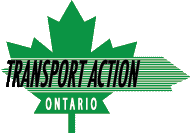By
Transport Action Ontario
|
Highways and Bridges ,
Intercity Rail and Bus ,
Latest News ,
Northern Ontario ,
Urban Transit
On November 15, Ontario released its 2018 Fall Economic Statement (FES). It is a large document covering all aspects of the Province’s operations. It is likely the most significant statement on the government’s intentions until the provincial budget comes out in Spring, 2019.
To date, the government has implemented various tax and fee cuts, including cancelling cap and trade, putting in a hiring freeze, changing labour laws, and cancelling some projects and programs, including 4 new universities, 758 renewable energy contracts, and the Environmental Commissioner office. There is a lot of public worry about additional future cuts as the government struggles to balance its books.
The statements on transportation in the FES are a mixed bag as summarized below:
• In contrast to their election platform promise to reinstate the Northlander train, the FES emphasizes northern highway improvements, and only promises to “review other initiatives to meet Northerners’ transportation needs, including passenger rail and bus services”.
• Similarly, in contrast to their promise to deliver all transit and transportation projects currently funded, the FES simply indicates that “the government looks forward to completing its review of all capital projects and intends to share details in the coming months”.
• The campaign plan to upload responsibility for existing and new subway lines from Toronto is maintained in the FES. See previous posting on this topic on the TAO website for more details. We have now heard that the advisory report on this uploading will be coming to the government by the end of this month.
• The campaign promise to actively explore High Speed Rail in Southwestern Ontario has been replaced with a plan to analyze a range of “options to either upgrade existing rail corridors, create new ones or utilize other forms of transportation.” This appears to be a welcome step-back from the previous government’s single-minded pursuit of High Speed Rail only. TAO has long advocated for a review of rail alternatives such as High Performance Rail involving incremental improvements to train speed and frequency on all existing corridors. But of course, the “other forms of transportation” statement bears watching.
• As expected, the province is reviving the Environmental Assessment for the GTA-W highway corridor. TAO participated in the previous EA process, emphasizing that existing infrastructure (rail, provincial highways, regional roads) need expansion to full capacity prior to a new expressway being built.
• A new item in the FES is a planned review of the enabling legislation for Metrolinx to “enhance the agency’s focus on regional transit delivery and service excellence”. Whether this leads to some sort of broader scope for Metrolinx, such as one regional transit agency like “Superlinx”, remains to be seen.
• The province is continuing work on the Greater Golden Horseshoe transportation plan, to which TAO and other non-government organizations have previously inputted.
• The FES is silent on the campaign promise to add $5B in new subway funding to build various lines in the GTHA. It is also silent on other topics that TAO has urged action on, including living up to the previous government promises of higher gas tax revenue to municipalities and provincial contributions to transit fare integration in Greater Toronto, as well as assistance to municipalities to implement low-income fares/passes.
In summary, with this new government, there are many planned or potential major changes to Ontario’s transportation landscape. TAO intends to closely monitor all of these and provide input to ensure that sustainability gets its fair due.


